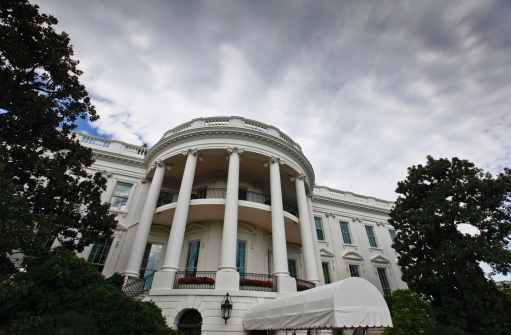This is the second in a series of posts by Steven J. Harper, creator and curator of the Trump-Russia Timeline, on the Mueller Report.
Trump and his defenders claim that special counsel Robert Mueller found “No Collusion.” They’re wrong.
The executive summary of Mueller’s report includes a section highlighting evidence of the Trump campaign’s interactions with the Russians, who wanted to help him win the election. Among the items:
Deal for Trump Tower Moscow: “2015 …The Trump Organization pursued the project through at least June 2016….”
“Dirt” on Clinton from Russia: “Spring 2016. Campaign foreign policy advisor George Papadopoulos made early contact with Joseph Mifsud, [who] told Papadopoulos that the Russian government had ‘dirt’ on Hillary Clinton in the form of thousands of emails.”
June 9, 2016 Trump Tower Meeting Offers Russian Support: “Summer 2016. …[A] Russian lawyer met with senior Trump Campaign officials Donald Trump Jr., Jared Kushner, and campaign chairman Paul Manafort to deliver what the email proposing the meeting had described as ‘official documents and information that would incriminate Hillary.’ The materials were offered to Trump Jr. as ‘part of Russia and its government’s support for Mr. Trump.’”
WikiLeaks and US Polling Data for Russia: “On July 22, 2016, WikiLeaks posted thousands of internal DNC documents revealing information about the Clinton Campaign. Within days, there was public reporting that US intelligence agencies had ‘high confidence’ that the Russian government was behind the theft of emails and documents from the DNC.”
Ukraine “Peace Plan”: “[O]n August 2, 2016, Trump campaign chairman Paul Manafort met in New York City with his long-time business associate Konstantin Kilimnik, who the FBI assesses to have ties to Russian intelligence.” Kilimnik delivered a peace plan for Ukraine that was a “backdoor” way for Russia to control part of eastern Ukraine. The two men also discussed Manafort’s strategy for winning Democratic votes in Midwestern states. Before and after their August meeting, Manafort shared polling data with Kilimnik.
Access Hollywood Tapes, WikiLeaks, and US Intelligence Community Warning on Russian Interference: “Fall 2016. On October 7, 2016, the media released video of candidate Trump speaking in graphic terms about women years earlier, which was considered damaging to his candidacy. Less than an hour later, WikiLeaks made its second release: thousands of John Podesta’s emails that had been stolen by the GRU [Russian Intelligence] in late March 2016… That same day, October 7, the Department of Homeland Security and the Office of the Director of National Intelligence issued a joint public statement ‘that the Russian Government directed the recent compromises of e-mails from US persons and institutions, including from US political organizations.’ Those ‘thefts’ and the ‘disclosures’ of the hacked materials through online platforms such as WikiLeaks, the statement continued, ‘are intended to interfere with the US election process.’”
Putin’s Full-Court Press: “Post-election 2016.Immediately after the November 8 election, Russian government officials and prominent Russian businessmen began trying to make inroads into the new administration. The most senior levels of the Russian government encouraged these efforts. The Russian Embassy made contact hours after the election to congratulate the President-Elect and to arrange a call with President Putin. Several Russian businessmen picked up the effort from there.”
So why didn’t Mueller bring criminal charges against members of the Trump campaign?
How Much Evidence Is Enough?
Mueller’s explained his decision not to prosecute in the final phrase of this sentence:
“[W]hile the investigation identified numerous links between individuals with ties to the Russian government and individuals associated with the Trump Campaign, the evidence was not sufficient to support criminal charges.” (emphasis supplied)
That wasn’t a proclamation of innocence. It was Mueller’s prosecutorial judgment that there was not enough admissible evidence to prove guilt “beyond a reasonable doubt” at trial. Justice Department guidelines required him to apply that standard.
But it also didn’t mean that the evidence was insufficient to remove a president who was unfit for office because, for example, his campaign, “expected it would benefit electorally from information stolen and released through Russian efforts” — which Mueller said he could prove:
“Although the investigation established that the Russian government perceived it would benefit from a Trump presidency and worked to secure that outcome, and that the Campaign expected it would benefit electorally from information stolen and released through Russian efforts, the investigation did not establish that members of the Trump Campaign conspired or coordinated with the Russian government in its election interference activities.” (emphasis supplied)
Conspiracy v. Collusion
During his Apr. 18 press conference, Attorney General William Barr said repeatedly that Mueller had confirmed Trump’s “No Collusion” mantra. The truth is that Mueller expressly excluded collusion from his analysis:
“In evaluating whether evidence about collective action of multiple individuals constituted a crime, we applied the framework of conspiracy law, not the concept of collusion.”
Mueller added that collusive behavior doesn’t necessarily satisfy the legal prerequisites for a criminal conspiracy, which “requires more than the two parties taking actions that were informed by or responsive to the other’s actions or interests.” Declining to prosecute collusive behavior doesn’t equal a finding of “No Collusion.”
Spinning The “No Collusion” Bridge Too Far
At first, Trump liked Barr’s spin. But then Mueller’s actual report caught up with both of them. The truth won’t stop Trump from repeating the “No Collusion” lie. But his tweets now reveal that even he doesn’t believe it:
Trump’s last tweet is right in one respect: Regardless of the descriptive term, what Russia and the Trump campaign did during the 2016 election should never happen again.
Steven J. Harper is the creator and curator of the Trump-Russia Timeline appearing at Dan Rather’s News & Guts and at Just Security. He is an attorney, adjunct professor at Northwestern University Law School, and author of four books, including Crossing Hoffa — A Teamster’s Story (Chicago Tribune “Best Book of the Year”) and The Lawyer Bubble — A Profession in Crisis. He blogs at The Belly of the Beast. Follow him on Twitter (@StevenJHarper1).
